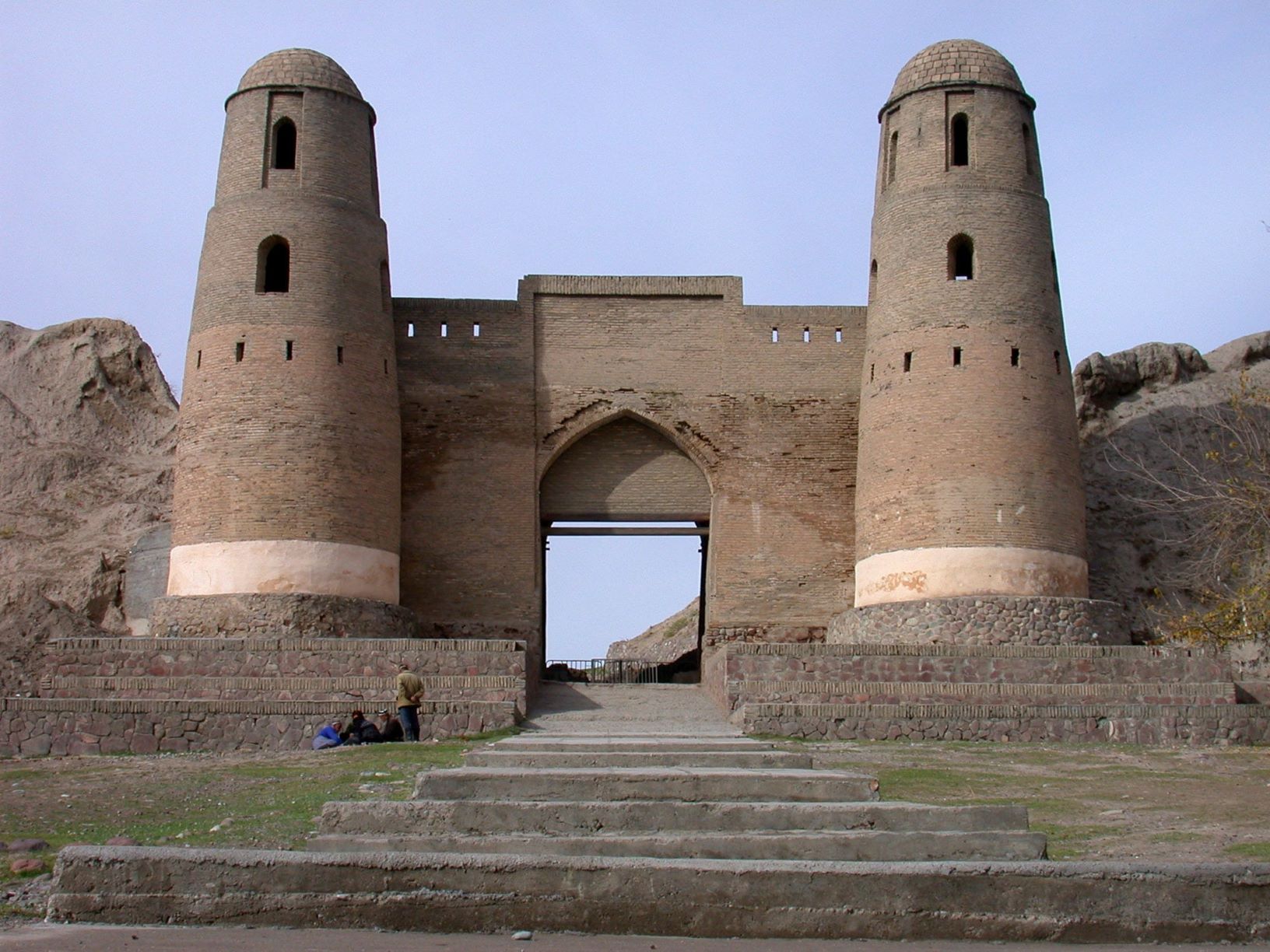The Hissar Fortress, one of the most famous historical monuments of Tajikistan, was built to protect the local population and trade caravans from the raids of nomads. The Hissar fortress still impresses with its power and monumentality, especially after major restoration.
The fortress was built about 3000 years ago, during the heyday, when the routes of the Great Silk Road passed near Hissar. The remaining remains of fortifications were built in the XVI–XIX centuries. The Hissar Fortress in Tajikistan is one of the oldest and largest architectural monuments of Central Asia.
Now it is an open-air museum with an area of 86 hectares, located on the site of an ancient settlement. It is located 30 km from the capital of Tajikistan, Dushanbe.
For a long time, the Hissar fortress served as the residence of the governor of the Emir of Bukhara and the base where the state troops were located. To date, only two cylindrical towers and structures around the main gate, forming a pointed arch and built on the instructions of the emir of Bukhara in the XVI century, have partially survived from the fortress. The fortress was completed in the XIX century. All structures are built of burnt brick.
The Hissar fortress was built on the slope of a large hill. A high fortress wall 1 meter thick with loopholes for guns and cannons was built of baked bricks. The main gate has a laconic and simple look, traditional for the feudal military architecture of the Bukhara Emirate. In the large arched opening of the fortress wall there were strong gates, which were guarded on both sides by two powerful cylindrical watchtowers. At the top of the towers there were shooting platforms with a high parapet to protect the soldiers and cut loopholes. There was no decoration on the thick brick walls of this monumental austere structure, but they still looked impressive.
Wide staircases and terraces lined with bricks led to the main entrance to the citadel. The inner territory was a large courtyard with the governor's palace complex, a swimming pool, and a huge garden. On the contrary, there was a large market square with a caravanserai (medieval hotel) and many shopping malls.
In the XVI–XVIII centuries, two madrassas and the mausoleum of Makhdumi Azam (translated "The Greatest Lord") were built. It is not known for sure who it was built for). Nearby, as with any other medieval fortress, there were houses and craft workshops.
There are legends among the locals about the Hissar Fortress, which have accumulated a lot over several millennia of known history. According to one of the most popular, Afrosiyob built the citadel to protect himself from Rustam. They are both famous heroic characters of Firdousi's famous epic poem "Shahnameh".
According to another mythical story of the Hissar fortress, the righteous Muslim Caliph Ali came to these places in ancient times to preach Islam on his legendary horse Dul-dul. He stopped at the mountain, which is located to the west of Hissar and is now called Poyi Dul-dul. Disguised as an acrobat-tightrope walker, he entered the fortress. Here they recognized him and tried to capture him. But the faithful horse brought him the magic sword "Zulfikar", and Ali killed all the enemies, including the evil sorcerer.
 Availability: year-round
Availability: year-round  Direction: Dushanbe-Hissar
Direction: Dushanbe-Hissar Duration: 1 day (6 hours)
Duration: 1 day (6 hours)  Type of tour: group (6 or more persons)
Type of tour: group (6 or more persons)- 09:00 - pick up of tourists from the hotel, and departue to Hissar
- 10:00 – visit the Hissar Fortress and Fortress museum.
The Hissar Fortress used to be a palace of one of Bukhara Emirate becks. The fortress with 1 metre walls and loopholes for guns and cannons towered on a high hill's slope and was carefully guarded. Inside there was a pool and a garden. Across from the fortress there was a noisy market square with a caravanserai and a variety of shops. Hissar Fortress and the town had been settled from VI BC to mid of XIX. It was the main administrative, political and economical centre of Hissar valley.
- 11:00 – fortress square / horse riding (at the request and expense of traveler)
- 11:30 – visit to the teahouse "Kharbuza" (watermelon).
The teahouse "Kharbuza" — is a unique in the world, it was built in the form of a melon (the Taj: - kharbuza). The teahouse, with a height of 43 meters, length 100 meters, width of 55 meters, is designed to receive 2.3 thousand visitors at a time.
- 12:00 – lunch, national cuisine
- 13:00 – return to Dushanbe
- 14:00 – arriving Dushanbe, tour completed
